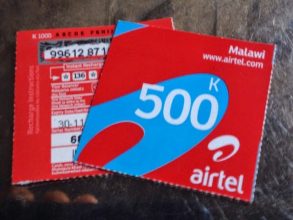Lead paint levels on the decline—study
New research conducted by Lead Exposure Elimination Project (Leep) alongside Malawi Bureau of Standards (MBS) has established progress in efforts to end lead poisoning from paint in Malawi.
Directly comparing the same paints sampled from the market in previous studies to the 2023 study, the percentage that contains “dangerously high levels” of lead has reduced from 53 percent to 33 percent.
In a statement released yesterday ahead of International Lead Poisoning Prevention Week, Leep said there were still five brands identified with high levels of lead.
MBS director general Bernard Thole said in the statement the concerned manufacturers have been engaged to immediately remove lead-containing raw materials from their paint.
He said: “Having strengthened its testing capacity, the Malawi Bureau of Standards is now in a strong position to ensure compliance with mandatory standards prohibiting lead in paint.

metal see-saw
“The reduction of lead in paint shown by this study demonstrates that progress is possible. However, we urge the remaining manufacturers to immediately remove lead-containing raw materials from their paint to comply with mandatory standards.”
Paints labelled Crown by Valmore Paints Limited, Monolux by Monolux Paints Limited, Medal by Rainbow Paints Ltd, Coral by Insignia Africa Ltd and Tropical, manufactured by OG Paints Ltd, were found to have high levels of lead in some paints.
However, lead was not found in the three paints from Rainbow and Plascon.
Rainbow Paints said in the statement they were delighted to have switched to lead-free paint.
“Eradicating lead from paint is technically and commercially feasible, and our customers appreciate our commitment to health and the environment,” the firm’s spokesperson is quoted in the statement.
However, Monolux Paints said in the statement they are taking a significant step towards a healthier and safer environment.
“We’re currently in the process of transitioning to lead-free formulations in our paints, and we anticipate introducing these eco-friendly alternatives by early-2024,” the company said.
The statement also quoted Valmore Paints as having said they are also committed to protecting the health of children, and the company is in the process of reformulating their paint to remove lead ingredients.
“We expect our lead-free paint to be on the market by mid-2024,” the company said.
According to Leep, lead exposure has severe negative health impacts, particularly on children.
Reads the Leep statement: “Lead causes permanent damage to their cognitive development, worsening their educational outcomes and future potential.
“Later in life, lead exposure causes hypertension and heart disease. Lead poisoning from paint and from other sources is estimated to affect 3.4 million children in Malawi, costing the country $878 million in lost earnings every year.”
On her part, Leep co-executive director Lucia Coulter agreed that MBS and paint industry leaders have made meaningful progress on taming lead paint hazards.
“Their work will protect Malawi’s children, improve educational outcomes and contribute to the United Nations Sustainable Development Goals (SDGs).
“We look forward to continuing to support testing and monitoring efforts and will continue to offer no-cost technical support to any remaining manufacturers who would like assistance in removing lead from their paint,” she said.
After finding high levels of lead in Malawi’s paint in 2021, the MBS took swift action by building testing capacity in its new laboratory complex, strengthening auditing processes, and taking steps to update the standards limiting lead in paint.
Malawi is now listed in the World Health Organisation observatory as one of 94 countries globally, and one of only 10 countries in Africa, with controls on lead on paint.






One Comment